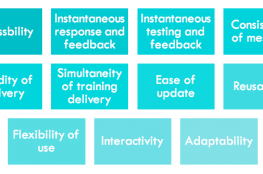This is part of a 3-part series focusing on applying adult learning theory in the workplace. To see the other articles, view A Brief Intro to Adult Learning Theory and Self Directed Learning as a Training Solution
Current Problem
Teams across 15 campuses are finding it increasingly difficult to track information and share it with the stakeholders. In addition, there is a lack of standardization in the way programs are run, further complicating alignment and adoption of initiatives to solve this problem.
Proposed Solution
Many of these conversations have started with ‘we can’t’ or ‘we don’t’. We can’t change this system or we don’t use this method. I usually ask probing questions to get to the bottom of these opinions. Is the ‘can’t’ related to something tangible? Is the ‘don’t’ due to a lack of structure or something else? Until a problem can be broken down into it’s smallest parts, a holistic fix cannot be created. Asking teams to think critically about their current processes will force all parties to honestly evaluate the problems they face. I highly recommend using this list of Socratic Questions to get past the surface issues. Much like the worksheet found at the bottom of this page, you can create an evaluation worksheet asking similar guiding questions to reach a conclusion.
Why Promote Critical Thinking?
Human beings draw conclusions from past experience – personal or otherwise. We can become entrenched in views because we have had positive and negative experiences that influence what we think will happen. Perhaps we’ve were involved in an unpleasant outcome related to group work that prevents us from trying something new. Conversely, maybe we heard of a new technology and we want in on it because everyone else is raving about it. Either way, it’s necessary to break down and evaluate this feelings or instincts in order to make logical and well informed decisions. Even if they result is less than stellar, you have begun a process of evaluation that allows you to continue build until you reach success.
What Does it Look Like?
 Start by creating a list of specific issues that your team is trying to tackle. If you are a manager, create your own and allow teams to do the same. For each issue, have team members brainstorm about the root causes and 2-3 possible solutions. You can have participants fill out the worksheet to the right, use the template at the bottom of this page, or create your own.
Start by creating a list of specific issues that your team is trying to tackle. If you are a manager, create your own and allow teams to do the same. For each issue, have team members brainstorm about the root causes and 2-3 possible solutions. You can have participants fill out the worksheet to the right, use the template at the bottom of this page, or create your own.
It is unlikely that everyone will have the same answers, or answers that get to the bottom of the problem. Ask team members to share their view of the problem then use Socratic Questions to whittle it down to it’s simplest form. This might look something like this:
| Stated Problem: There aren’t enough people or resources available to complete this project
Follow Up Questions
|
Do the same for each section of the worksheet until there is a clear idea of what actionable steps can be taken to begin to solve the issue.
Once that has happened, have teams pair off with members of other teams to get feedback on how they handled similar situations. The idea is to have fresh perspectives challenge existing perceptions and require the problem solvers to re-evaluate, explain and if necessary, defend their beliefs and next course of action. |
Will this work for me?
- There is a question or issue that requires deeper exploration in order to resolve
- You are looking to engage your audience and get them involved through intellectual contributions
- You need to change long held thoughts or processes but are facing resistance (change management)
- You want to empower your audience to go beyond surface knowledge and use their skills and experience to develop their own ideas
Want to try it out? Use this PDF template to build a framework for applying any adult learning strategy to your current work.



